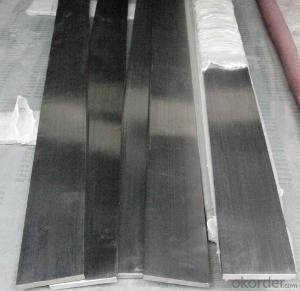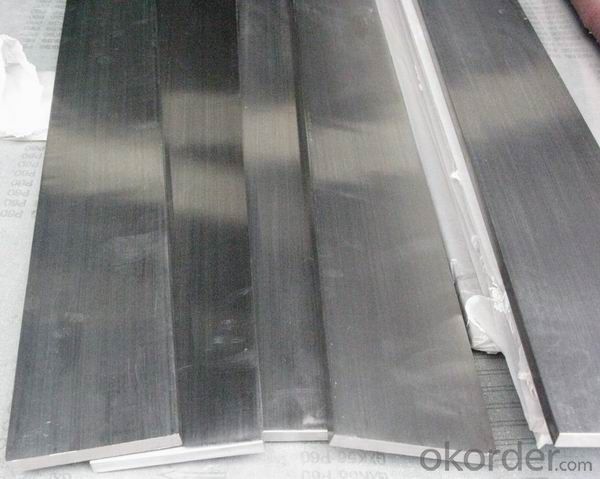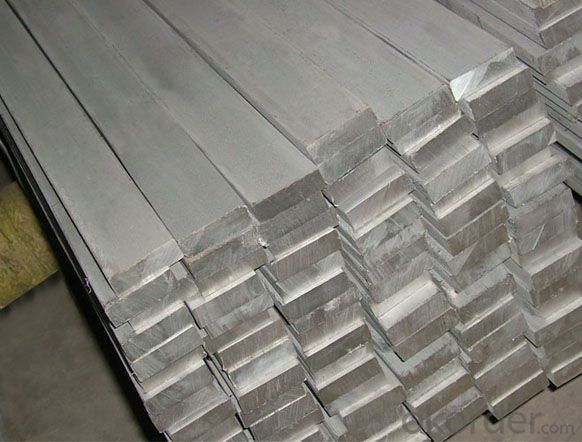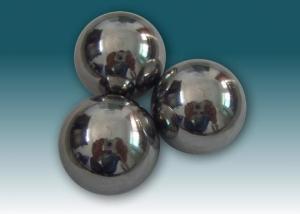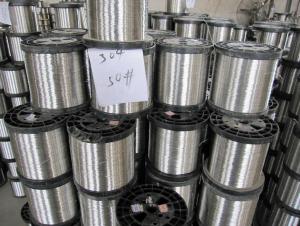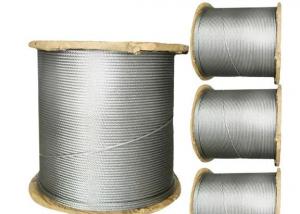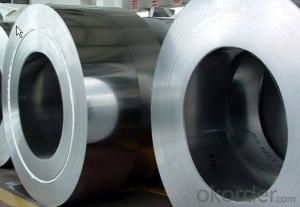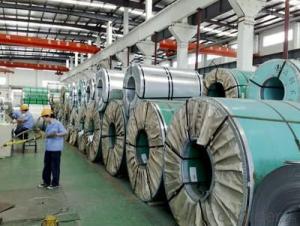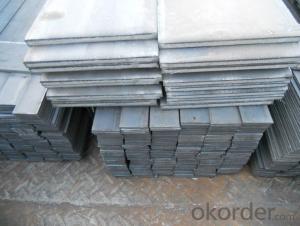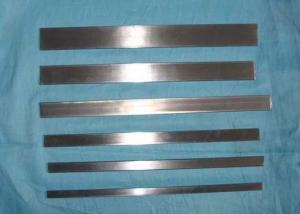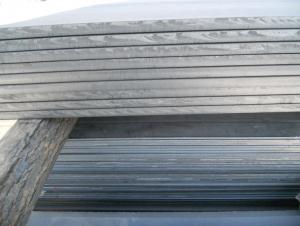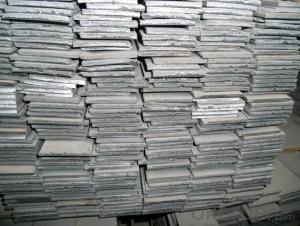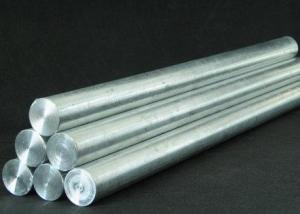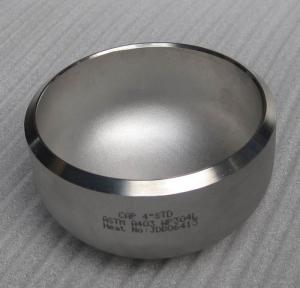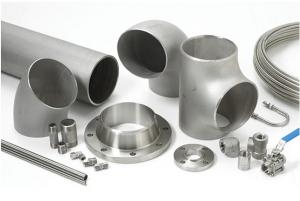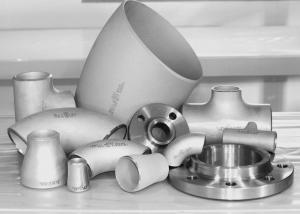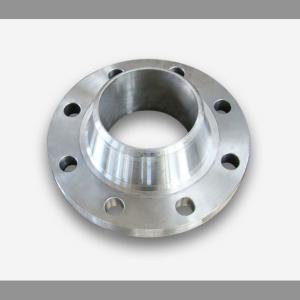Stainless steel channel; channel steel
- Loading Port:
- Guangzhou
- Payment Terms:
- TT OR LC
- Min Order Qty:
- 50 m.t.
- Supply Capability:
- 10000 m.t./month
OKorder Service Pledge
OKorder Financial Service
You Might Also Like
Stainless Steel Channels
Stainless Steel Channel, is ideal for all applications where greater strength and superior corrosion resistance is required. Stainless Channel has a durable dull, mill finish that is widely used for all types of fabrication projects that are exposed to the elements - chemical, acidic, fresh water, and salt water environments
The standard length for most size channel is 12’-14’ random lengths, but lengths are available in some sizes up to 20’ and longer. Finishes on channel can vary and include cold drawn, centerless ground, smooth turned, rough turned, turned ground and polished, and HRAP.
· We will custom saw cut to length
· DEFARS or domestic material available in many sizes
· Polishing services are available
Product Name | Stainless Steel Channel | |
Standard | JIS, ASTM, GB, DIN, EN, AISI | |
Grade | 301,302,303,304,304L,305,309S,310S,316,316L,317,317L,321,347 631... | |
Diameter | 75x30x6mm many other sizes can be done | |
Length | 1m~6m | |
Package Detail | Export standard package, bundled or be required. The inner size of container is below: 20ft GP: 5.9m(length) x 2.13m(width) x 2.18m(high) about 24-26CBM 40ft GP: 11.8m(length) x 2.13m(width) x 2.18m(high) about 54CBM 40ft HG: 11.8m(length) x 2.13m(width) x 2.72m(high) about 68CBM | |
Delivery Time | Normally according to the order quantity or upon negotiation | |
Payment Terms | L/C, T/T | |
Application | Food stuff, gas, metallurgy, biology, electron, chemical, petroleum, boilers, nuclear, energy, construction field, ships building industry, war and electricity industry, boiler heat exchanger, machiner and hardware fields and medical equipment, fertilizer, etc.
| |
Contact | Our products are very popular because of high-quality and reasonable prices. If you are interested in any of our products, please feel free to contact us for more information. | |
- Q: Can stainless steel flats be used in construction industry?
- Yes, stainless steel flats can be used in the construction industry. Stainless steel is a highly versatile and durable material that offers numerous benefits for construction applications. Stainless steel flats are often used in the construction of buildings, bridges, and infrastructure due to their excellent corrosion resistance, strength, and aesthetic appeal. One of the primary advantages of stainless steel flats in construction is their resistance to corrosion. Stainless steel contains a minimum of 10.5% chromium, which forms a passive oxide layer on the surface, protecting it from rust and staining. This corrosion resistance makes stainless steel flats suitable for applications in harsh environments or areas exposed to moisture, such as coastal areas or industrial facilities. Stainless steel flats also offer exceptional strength and durability, making them ideal for structural components in construction. They have a high strength-to-weight ratio, allowing for lighter and more efficient designs. This strength ensures that stainless steel flats can withstand heavy loads, making them suitable for various construction projects. Furthermore, stainless steel flats provide an attractive and modern aesthetic to buildings and structures. Their smooth and reflective surface adds a touch of elegance and sophistication to architectural designs. Stainless steel is also available in various finishes, such as brushed, polished, or textured, allowing architects and designers to achieve their desired aesthetic goals. In addition to these benefits, stainless steel flats are easy to clean and maintain, offering long-term cost savings. They are also environmentally friendly, as stainless steel is 100% recyclable and can be reused without loss of quality. Overall, stainless steel flats have proven to be a valuable material in the construction industry. Their corrosion resistance, strength, aesthetic appeal, and sustainability make them a reliable choice for a wide range of construction applications.
- Q: Can stainless steel flats be used in the production of chemical pumps?
- Indeed, chemical pumps can utilize stainless steel flats in their production. The exceptional corrosion resistance properties of stainless steel make it a favored option for constructing chemical pumps. Its ability to withstand the corrosive impact of diverse chemicals renders it ideal for deployment in the chemical industry. The utilization of stainless steel flats in fabricating the pump casing, impellers, and other components guarantees the pump's endurance and longevity when exposed to aggressive chemicals. Furthermore, stainless steel's renowned strength and temperature resistance further augment its appropriateness for chemical pump production.
- Q: What are the surface finishes available for stainless steel flats?
- There are several surface finishes available for stainless steel flats, each offering unique characteristics and aesthetics. 1. No.1 Finish: Also known as hot rolled annealed and pickled (HRAP), this finish has a rough, dull appearance with a non-reflective surface. It is commonly used for structural applications where corrosion resistance is not a primary concern. 2. No.2B Finish: This finish is achieved by cold rolling, annealing, and pickling, resulting in a smooth, reflective surface. It is widely used for general purposes where a glossy appearance is desired. 3. No.2D Finish: Similar to No.2B finish, this finish is achieved by cold rolling, annealing, and pickling, but it has a semi-reflective surface. It is often used for architectural applications where a less reflective surface is preferred. 4. No.3 Finish: Also known as a ground finish, this finish is achieved by mechanically polishing the surface with progressively finer abrasives. It has a unidirectional, satin-like appearance, making it suitable for decorative applications. 5. No.4 Finish: This finish is achieved by polishing the surface with finer abrasives than No.3 finish, resulting in a smoother and more reflective surface. It is commonly used for decorative purposes, such as kitchen appliances and trim. 6. Hairline Finish: This finish is achieved by mechanically polishing the surface with a fine abrasive, creating a long, narrow, and uniformly textured appearance. It is commonly used for architectural applications, such as handrails and elevator panels. 7. BA (Bright Annealed) Finish: This finish is achieved by annealing the stainless steel in a controlled atmosphere, resulting in a highly reflective, mirror-like surface. It is often used for decorative purposes, such as automotive trim and signage. 8. Satin Finish: This finish is achieved by using a combination of mechanical abrasion and chemical treatments, resulting in a low-reflective, brushed appearance. It is commonly used for architectural applications where a muted, textured surface is desired. Overall, the choice of surface finish for stainless steel flats depends on the intended application, desired aesthetics, and the level of corrosion resistance required.
- Q: Can stainless steel flats be coated?
- Yes, stainless steel flats can be coated. Coatings such as paint, powder coating, and plating can be applied to stainless steel flats to enhance their appearance, protect against corrosion, or provide specific functional properties.
- Q: What are the different types of stainless steel flats available for architectural applications?
- There are several types of stainless steel flats that are commonly used in architectural applications. These include austenitic stainless steel flats, which are known for their excellent corrosion resistance and high ductility. Another type is ferritic stainless steel flats, which have good resistance to corrosion and high heat resistance. Additionally, there are martensitic stainless steel flats, which have high strength and hardness properties. Finally, duplex stainless steel flats combine the benefits of both austenitic and ferritic stainless steel, offering high strength and corrosion resistance.
- Q: Are stainless steel flats suitable for high-temperature applications?
- Yes, stainless steel flats are suitable for high-temperature applications. Stainless steel is known for its excellent heat resistance and can withstand temperatures up to 1200°C (2200°F). It retains its strength and corrosion resistance, making it a reliable choice for various industries such as aerospace, automotive, and manufacturing where high temperatures are involved.
- Q: Can stainless steel flats be formed into different shapes?
- Yes, stainless steel flats can be formed into different shapes through processes such as bending, rolling, and welding.
- Q: How is stainless steel flat manufactured?
- Stainless steel flat is typically manufactured through a process called hot rolling. First, large stainless steel slabs are heated to a high temperature and then passed through a series of rolling mills. These rolling mills apply pressure to the heated slabs, gradually reducing their thickness and shaping them into flat strips. During the hot rolling process, the stainless steel slabs are continuously passed through the rolling mills, which consist of a series of rotating cylinders with decreasing gaps between them. The pressure exerted by these rollers compresses and elongates the stainless steel, resulting in a thinner and longer flat product. To prevent the stainless steel from sticking to the rollers during the hot rolling process, lubricants or coolants are often used. This helps to reduce friction and heat buildup, ensuring a smoother and more efficient manufacturing process. Once the desired thickness is achieved, the stainless steel flat strips are then cooled and further processed to remove any surface defects or imperfections. This may involve additional heat treatment, pickling, or surface finishing processes, depending on the specific requirements of the end product. Overall, the hot rolling process is instrumental in manufacturing stainless steel flat, as it allows for the precise control of thickness, shape, and surface quality, resulting in a high-quality and versatile material that is widely used in various industries.
- Q: Are stainless steel flats suitable for electrical enclosures?
- Stainless steel flats are indeed a suitable option for electrical enclosures. The reason for this is that stainless steel is widely favored in the construction of electrical enclosures due to its exceptional resistance to corrosion, remarkable strength, and long-lasting nature. It is capable of enduring harsh conditions and effectively safeguarding electrical components against factors such as moisture, dust, and various external elements. Furthermore, stainless steel possesses fire-resistant properties, thus making it a secure choice for electrical enclosures. Moreover, stainless steel flats can be easily manipulated and tailored to meet specific enclosure requirements. In conclusion, stainless steel flats are an ideal material selection for electrical enclosures as they guarantee the safety and durability of electrical equipment.
- Q: Is stainless steel flat corrosion-resistant?
- Stainless steel, indeed, possesses a flat and commendable resistance to corrosion. It is an alloy comprising at least 10.5% chromium, which generates a delicate, unseen, and safeguarding oxide layer on the metal's exterior. This oxide layer, referred to as a passive layer, effectively impedes corrosion by obstructing the metal's interaction with its surroundings. Consequently, stainless steel's flat surfaces exhibit exceptional resistance to corrosion, rendering it a widely favored option for numerous applications necessitating durability, as well as resistance against rust and staining. Such applications include kitchen appliances, automotive components, and architectural structures.
Send your message to us
Stainless steel channel; channel steel
- Loading Port:
- Guangzhou
- Payment Terms:
- TT OR LC
- Min Order Qty:
- 50 m.t.
- Supply Capability:
- 10000 m.t./month
OKorder Service Pledge
OKorder Financial Service
Similar products
Hot products
Hot Searches
Related keywords
